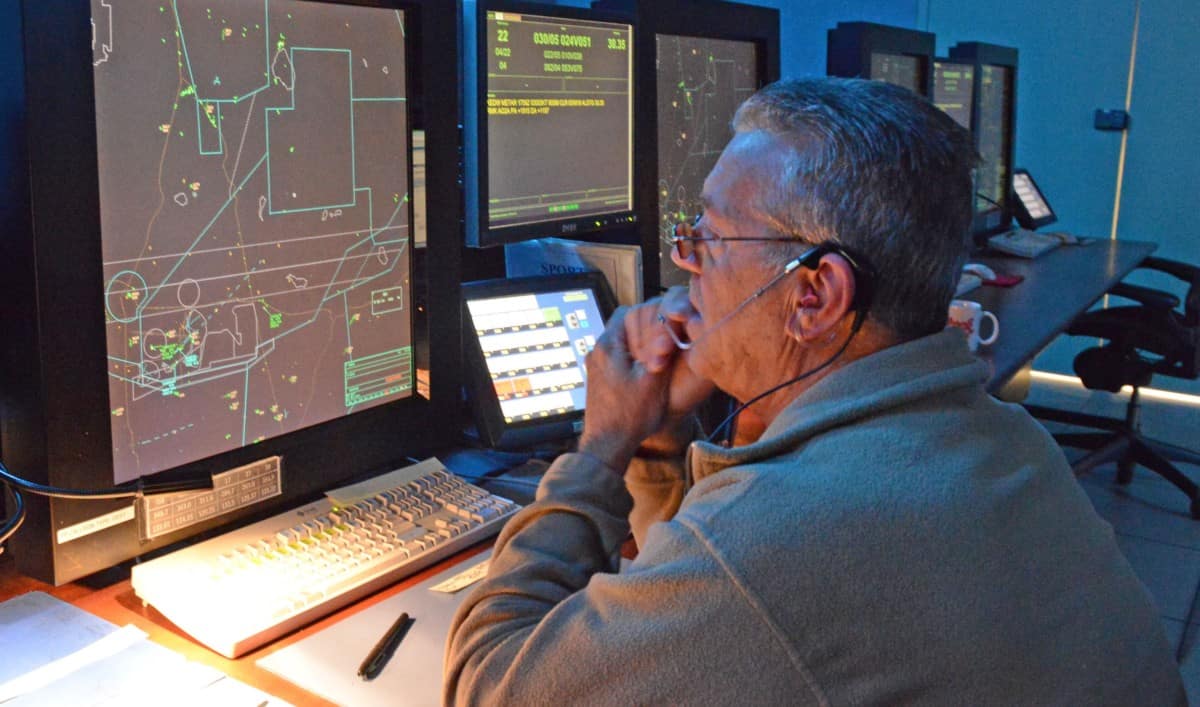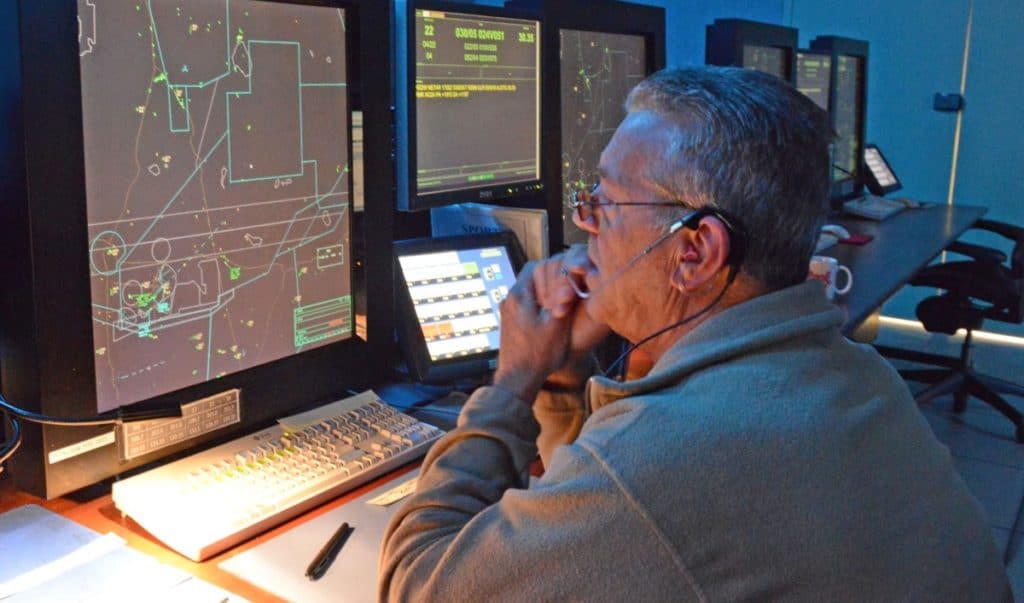
If you have ever heard air traffic controllers talking to pilots it sounds like a foreign language, and to be honest, to new student pilots it is! So the question remains, “How the heck do pilots understand all these seemingly incomprehensible instructions?”
Pilots are taught to understand and speak the required numbers, words, and phrases used in aviation during their pilot training. Using communication training aids and simulators as real-life communications helps pilots learn what is expected to be heard and what to say back in reply to ATC.
Learning to talk ‘Aviation’ can be one of the most daunting and hardest things a student pilot has to overcome to become a pilot. But with time and practice 90% of all the instructions you hear will make sense to a pilot, however, there are times when even experienced pilots get stumped by a request from air traffic control (ATC).
To begin to understand the instructions being given from ATC a pilot must first learn what the standard words, numbers, and phrases are that are used throughout aviation. To help prevent communication errors between pilots and air traffic controllers the International Civil Aviation Organization (ICAO) came together in 1946 and developed the Standardized Aviation Terminology that all pilots and air traffic controllers use today, no matter which country they fly in.
Careful consideration was given to selecting words that sound completely different from one another and the pronunciation of words and letters was developed to help pilots with strong accents be understood by other pilots and air traffic controllers when flying into another country.
Here are some examples of the common terminology and phraseology used by pilots and air traffic controllers:
1 – Pronounced “Won”
2 – Pronounced “Too”
3 – Pronounced “Tree”
4 – Pronounced “Fore”
5 – Pronounced “Fife”
6 – Pronounced “Six”
7 – Pronounced “Seven”
8 – Pronounced “Eight”
9 – Pronounced “Niner”
0 – Pronounced “Zero”
A – Pronounced “Alpha”
B – Pronounced “Bravo”
C – Pronounced “Charlie”
D – Pronounced “Delta”
E – Pronounced “Echo”
F – Pronounced “Foxtrot”
G – Pronounced “Golf”
H – Pronounced “Hotel”
I – Pronounced “India”
J – Pronounced “Juliet”
K – Pronounced “Kilo”
L – Pronounced “Lima”
M- Pronounced “Mike”
N – Pronounced “November”
O – Pronounced “Oscar”
P – Pronounced “Papa”
Q – Pronounced “Quebec”
R – Pronounced “Romeo”
S – Pronounced “Sierra”
T – Pronounced “Tango”
U – Pronounce “Uniform“
V – Pronounced “Victor”
W – Pronounced “Wiskey”
X – Pronounced “X-Ray”
Y – Pronounced “Yankee”
Z – Pronounced “Zulu”
This is just a brief example of some of the hundreds of words and phrases that became standardized by ICAO and by doing so it dramatically reduced the number of incidents and accidents caused by miscommunication.
If you would like to understand more about the ICAO terminology you can view their Terminology Manual HERE
Once student pilots begin to memorize the required terminology the next part to learn is when and where to make radio calls to air traffic control and what is expected of them to say and also hear back from ATC. This is the part that really can hold a student back in their training!
Most radio calls generally follow a set format depending on what the pilot wishes to do and where they are. Here are some typical times when a pilot will wish to make a radio call:
- To receive clearance instructions for departure
- To receive clearance to start engines or push back from the terminal gate
- Taxiing instructions
- Clearance to take off
- Aircraft position reports
- Clearance to enter an airport’s airspace
- Clearance to land
When I was first learning to fly I was really struggling to not only learn what needs to be said but I also had severe anxiety about pressing the transmit button! I was not alone in the anxiousness as many student pilots also get this feeling because whenever you talk on the radio, whoever else is flying in that area and using that frequency can also hear you.
If you make a mistake EVERYONE hears it, if you get a stern talking-to from air traffic control everyone hears it so it’s a very nerve-wracking time!
Learn More…
Try These Articles:
* What are Airport Landing Fees?
* Why Do Airplanes Fly in a Curve?
To help overcome my fear I paid a visit to my local air traffic control tower and spent an afternoon sitting alongside the air traffic controllers trying to understand what they did and what they do to help pilots – And you know what…They were not the fast-talking monsters you seem to picture in your head!
The second tip I was offered was to buy a small handheld radio and sit by the airport and listen to the airport radio frequency. Over time, this began to make more sense as the radio calls all seemed to be roughly the same, just directed at the different aircraft.
If you would like to get yourself a small radio to listen to air traffic control you can find a great selection in my Amazon Store HERE.
The last thing I did to help was to purchase and use a software-based aviation communications training tool. These pieces of kit are one of the best investments any student pilot can make. The tool leads you through all phases of flight and simulates what ATC would be saying to you and what you need to say back.
Back when I learned to fly, software-based training aids were in their infancy, but have come a long way since those days!
The best communication software on the market today, and one that I personally recommend is called PlaneEnglish. You can find out more about it HERE. Use Code ‘PilotTeach’ to get 10% Off!
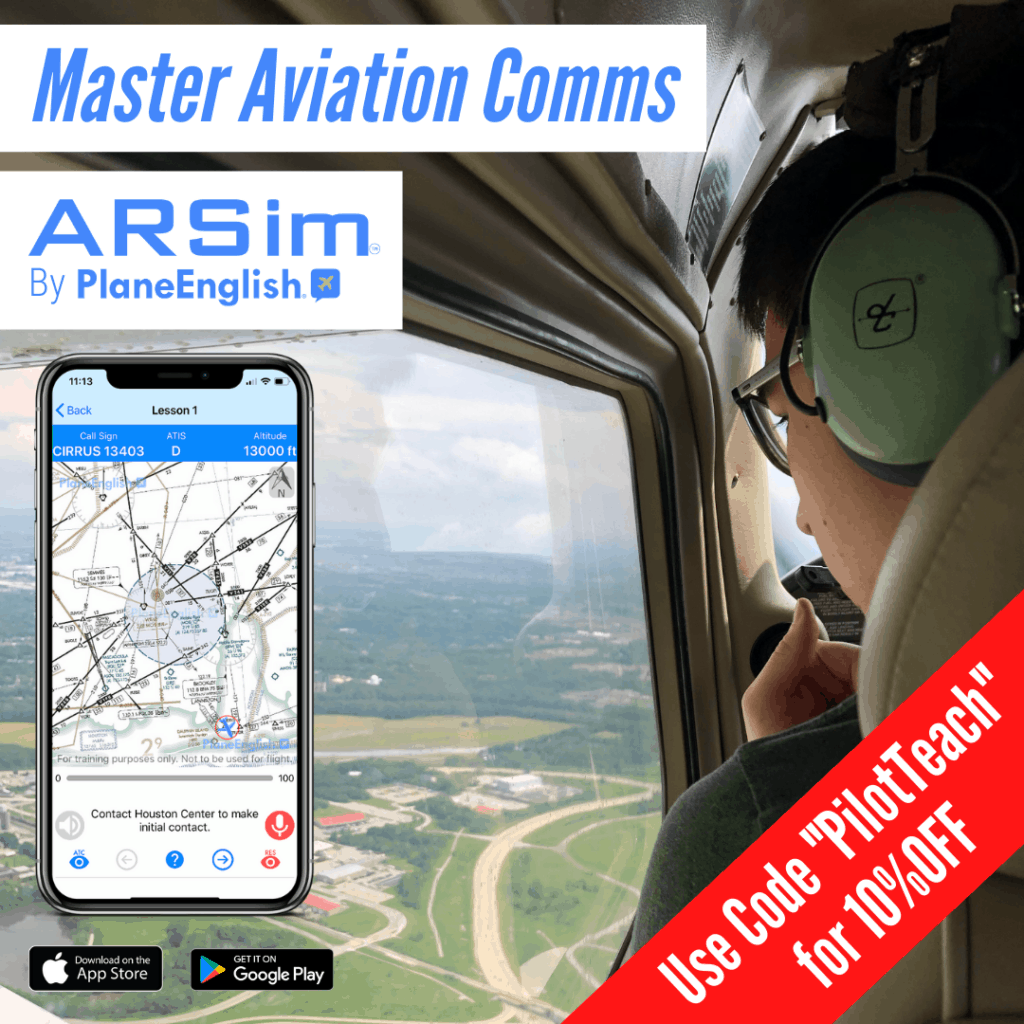
With time and repetition, these phrases all began to make sense and I was soon understanding and communicating with busy air traffic control towers around my local flying region.
If you wish to listen to Iive to air traffic control check out LiveATC HERE
Do Pilots Need a Radio Operator Certificate?
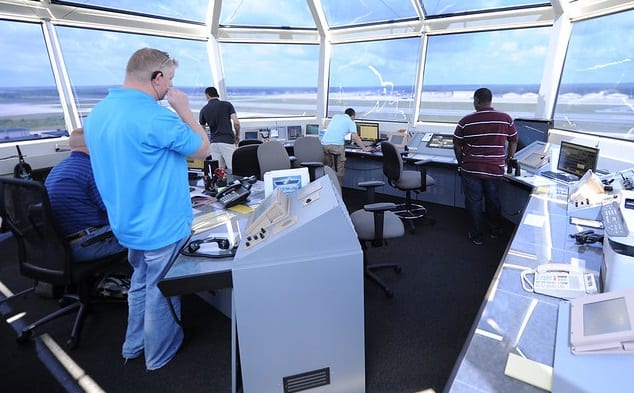
In countries like the UK and Canada, pilots must obtain a Radio Operators Certificate. In the UK, a pilot must pass an oral simulation examination during their pilot training to ensure they can communicate, listen and understand correctly to ensure they will a safe pilot.
In the US, pilots do not require a radio operator certificate but they do have to demonstrate to the flight examiner that they can safely and efficiently communicate with air traffic control during their flight test. If the examiner feels they lack the confidence, ability, or training to communicate they can fail the students’ flight test.
For students who train at small, quiet, rural airports their first flight to a busy international airport can be an overwhelming experience. Whereas those pilots that trained at airports with busy airspace around them the same flight is a non-event.

Join My Newsletter & Get Great Tips, Information and Experiences To Help You Become a Superb Pilot!
How Do Pilots Remember ATC Instructions?
New pilots use acronyms to help write quick notes when talking to air traffic control. Departure clearances from busy airports must be repeated back to ATC verbatim and then flown accordingly. Using notes and a general idea of what the controller will be advising you to do helps pilots remember instructions.
A popular Acronym when departing on an IFR flight is CRAFT:
C – Clearance Limit
R – Route
A – Altitude
F – Frequency
T – Transponder Code
By having CRAFT written down the side of a notepad this will be the order of information that the air traffic controller will pass to the pilot when they call to get their IFR clearance for the planned departure. As the controller calls out the information the pilot just writes each part next to its applicable letter.
As a pilot becomes more experienced and more familiar with the airports they are operating out of the calls they make will be the same so the expectation of what the air traffic controller will say back to them will usually be very similar.
To begin, student pilots are taught the four W’s:
- Who you’re calling
- Who you are
- Where you are
- What you want
Here are some examples of basic radio calls between a pilot and a small airport ground/tower controller:
When Ready to Taxi:
Pilot: Parsons Ground, Cessna 8241N, south ramp, VFR, 5,500 to Langley with information Sierra
Ground: Cessna 8241N, Parsons Ground, taxi to Runway 28
Pilot: Taxi to Runway 28, Cessna 8241N
When Ready for Takeoff:
Pilot: Parsons Tower, Cessna 8241N, Runway 28, ready for takeoff
Tower: Cessna 8241N, Runway 28, cleared for takeoff
Pilot: Cleared for takeoff Runway 28, Cessna 8241N
Arriving for Landing:
Pilot: Parsons Tower, Cessna 8241N, 10 miles southwest at 3,500, inbound for landing with information Sierra
Tower: Cessna 8241N, Parsons Tower, report entering left downwind Runway 28
Pilot: Cessna 8241N entering left downwind Runway 28
Tower: Cessna 8241N, cleared to land Runway 28
Pilot: Cleared to land Runway 28, Cessna 8241N
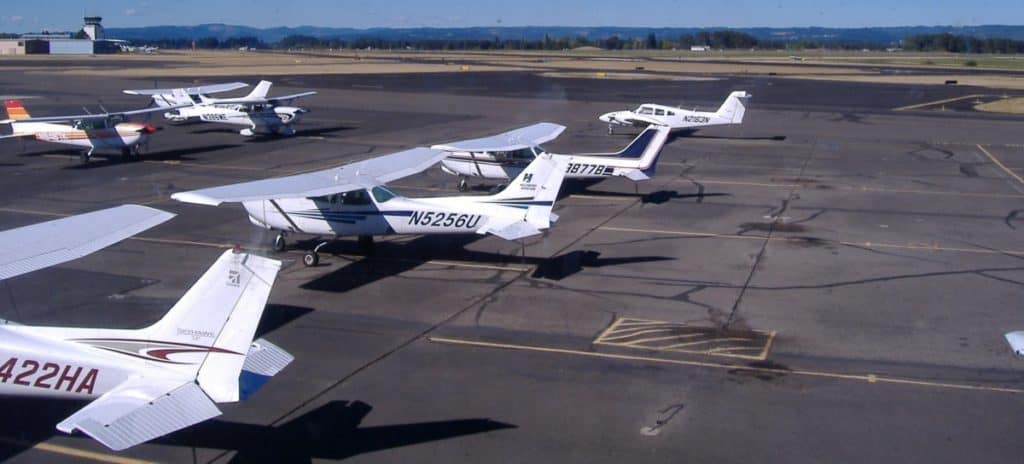
If a pilot does not understand what air traffic control is saying to them they are expected to announce “Say Again” to the air traffic controller. This will allow the air traffic controller the opportunity to repeat the last instruction, usually a little slower so the pilot (hopefully) understands!
An instruction that is misunderstood can have catastrophic consequences therefore it is paramount the pilot communicates as much as is required to understand the controllers’ instruction.
At busy international airports, the number of pilots that one air traffic controller has to deal with at any one time can be immense and this is why they talk fast. Most pilots are able to understand these fast-talking controllers because they are also very experienced and have been talking with ATC for a long time.
It is very rare you will find a student or new pilot being allowed into this busy airspace due to the havoc they can cause. If a pilot whose radio communication is not up to the required standard tries to enter the airspace, ATC will often deny them permission to enter the airspace or divert them to an alternate nearby airport.
A rouge, nervous, and inexperienced pilot can cause hundreds of thousands of dollars in delays to airlines as ATC clears the airspace to allow the inexperienced pilot time to land or fly clear of the airspace, especially if they have become lost, and trust me it is very easy to become unsure of your exact position when you are first learning to fly!
If you wish to hear how a disorientated pilot can cause chaos for an air traffic controller please check out this YouTube video Here, then imagine this happening at JFK or Los Angeles International!

